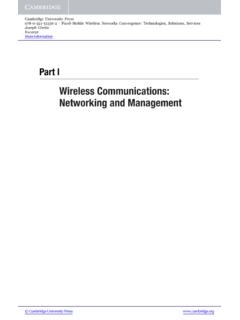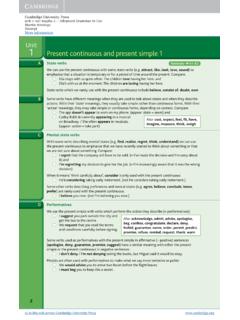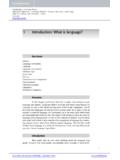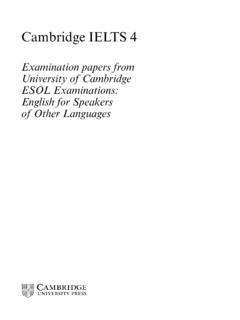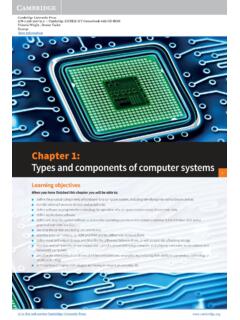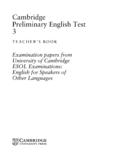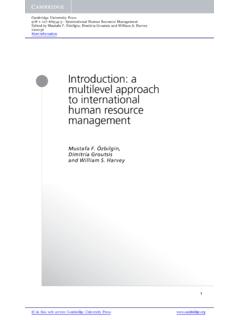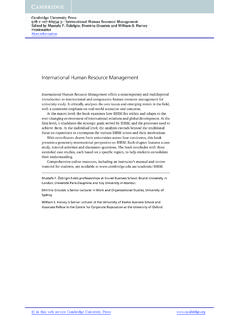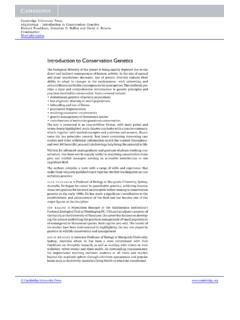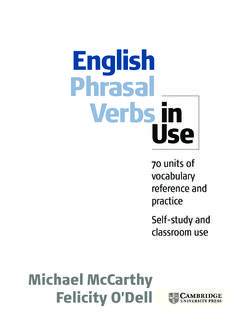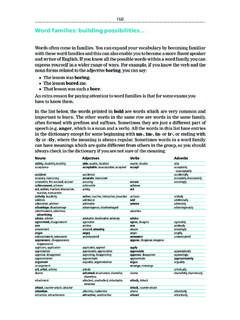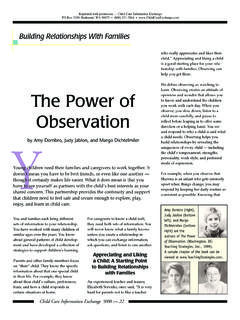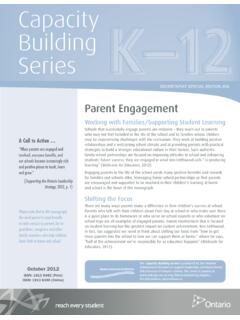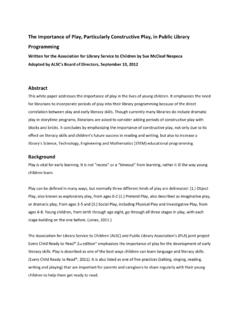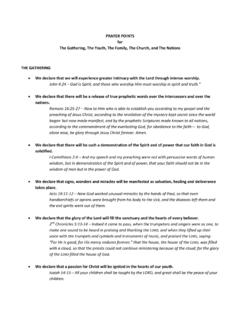Transcription of Cambridge Advanced Learner’s Dictionary
1 CambridgeAdvancedLearner sDictionaryPUBLISHED BY THE PRESS SYNDICATE OF THE UNIVERSITY OF CAMBRIDGEThe Pitt building , Trumpington Street, Cambridge , United KingdomCAMBRIDGE UNIVERSITY PRESSThe Edinburgh building , Cambridge CB2 2RU, UK40 West 20th Street, New York, NY 10011 4211, USA477 Williamstown Road, Port Melbourne, VIC 3207, AustraliaRuiz de Alarc n 13, 28014 Madrid, SpainDock House, The Waterfront, Cape Town 8001, South Cambridge University Press 2003 This book is in copyright. Subject to statutory exception and to the provisions of relevant collective licensing agreements,no reproduction of any part may take place without the written permission of Cambridge University words which we have reason to believe constitute trademarks have been labelled as such.
2 However,neither the presence nor absence of such labels should be regarded as affecting the legal status of any published 1995 as Cambridge International Dictionary of EnglishThis edition first published 2003 as Cambridge Advanced Learner s DictionaryReprinted 2003 Typeface Nimrod, Frutiger A catalogue record for this book is available from the British LibraryLibrary of Congress Cataloguing in Publication data applied forISBN 0 521 82422 2 hardbackISBN 0 521 53105 5 paperbackISBN 0 521 82423 0 hardback + CD-ROMISBN 0 521 53106 3 paperback + CD-ROMISBN 3 12 5179947 Klett paperback editionISBN 3 12 5179939 Klett hardback + CD-ROMeditionPrinted and bound in Great Britain by Clays Ltd.
3 St Ives plcContentsGrammar codes and abbreviationsinside front coverIntroductionviiHow to use the dictionaryviiiNumbers that are used like wordsxiiThe Dictionary1 1490 Colour PicturesCentre 1 16 Idiom Finder1491 WordFamilies1522 Geographical Names1534 Common First Names1539 Prefixes and Suffixes1540 Irregular verbs1542 Regular verb tenses1545 Symbols1547 Units of measurement1548 Pronunciation1549 Pronunciation symbolsinside back coverStudy SectionsWorkand jobsCentre 18 MoneyCentre 19 Periods of timeCentre 20 RelationshipsCentre 21 TelephoningCentre 22 Sounds and smellsCentre 23 Computers, text Centre 24 25messages, emailRelative clausesCentre 26 Phrasal verbsCentre 27 DeterminersCentre 28 Modal verbsCentre 29 HomographsCentre 30 HomophonesCentre 31 Letter WritingCentre 32 33 Regular inflectionsCentre 34 35 PunctuationCentre 36 37 Varieties of EnglishCentre 38It seems a very long time since I first heardabout the death of printed dictionaries.
4 I wasassured, very confidently, in the early 1980s,that everything would be electronic by thenew century. Nobody would bother to flickthrough 1600 pages when they could just hitthe enter we are now well into the new centuryand people seem just as keen to buy theprinted book. You may well have bought aversion of this Cambridge AdvancedLearner s Dictionary with a CD-ROMattached, but the medium which you arecurrently using to read these words is thesame medium that was used in the firstCambridge University Press book in 1584 paper and ink.
5 So why has the printeddictionary survived so well?Maybe people see their Dictionary as afriend. Perhaps a bond is created in all thehours that a learner spends together with adictionary. Perhaps some of the character ofthe book rubs off on the reader. And whatkind of character would they find in theCambridge Advanced Learner s Dictionary ?Friendly, that would be one part of thecharacter. We have made the page as friendlyand easy to read as possible, with colouredprinting to make the words easier to find, andwith a special clear way of showing idiomsand phrasal verbs.
6 We have also included an Idiom Finder at the back of the dictionaryso that you can find idioms even if you don tknow which part of the Dictionary to look in. Helpful would also be part of the will find Common Learner Error notes spread throughout the Dictionary , to makesure that you don t make the mistakes thatmany learners make. The notes are based onthe Cambridge Learner Corpus, which is a15-million word collection of learners English based on what students have writtenin the Cambridge exams from CambridgeESOL. This corpus means that we can reallysee what learners English is like and findways to make it even better.
7 Well-informed is certainly part of thecharacter. You will find thousands of up-to-date words as you look through thedictionary, including many that have onlyjust come into the language. We can makesure that these important new words areincluded because we have the hugeCambridge International Corpus to help has over 500 million words from BritishEnglish and American English, from spokenEnglish and written English, and from manyspecialized types of English, such as Law andComputers and you find that the character of theCambridge Advanced Learner s Dictionary isone that appeals to you.
8 Then I should pointout that you are actually making friends witha large group of talented people who createdthis book and its predecessor, the CambridgeInternational Dictionary of ofthem have an excellent feel for language anda clear understanding of what learners needto know. The corpus resources can give usinformation, but only good lexicographerscan put it into a book that you can makefriends with. I hope you enjoy getting toknow GillardJanuary 2003viiIntroductionAALETTER(pluralA s),a(plurala s)/e /noun[C]the 1stletter of the English alphabet from A to Bfrom one place to another:Using this soft-ware a driver can now work out the quickest route from Ato B.
9 From A to Zincluding everything:This book tells thestory of her life from A to /noun[C or U]pluralA sorAsanote in Westernmusic:This concerto is in the key of A /noun[C or U]pluralA sorAsamark in anexam or for a piece of work that shows that your workis considered excellent:Sophiegot(an) A for English. She gotstraightAs(= All her marks were As)in herend-of-year exams. USJim is astraightAstudent(=All his marks are A).AELECTRICITYABBREVIATION FORampELECTRICITYaNOT PARTICULARWEAK/ /,STRONG/e /determiner(ALSOan)1used before a noun to refer to a single thing or personthat has not been mentioned before, especially whenyou are not referring to a particular thing or person, oryou do not expect listeners or readers to know whichparticular thing or person you are referring to:I vebought a car.
10 She s got a boyfriend. There was asudden loud noise. What a shame that you couldn t goto the party. Iheard a child crying. Is he a friendofyours(= one of your friends)?2used to state what typeof thing or person something or someone is:She wantsto be a doctor when she grows up. This is a very mildcheese. Experts think the painting may be a Picasso(=by Picasso).3used to mean any or every thing orperson of the type you are referring to:Can you ride abike? Acheetah can run faster than a lion. Ateacherneeds to have a lot of before some un-countable nouns when you want to limit their meaningin some way, such as when describing them morecompletely or referring to one example of them:Ionlyhave a limited knowledge of Spanish.
